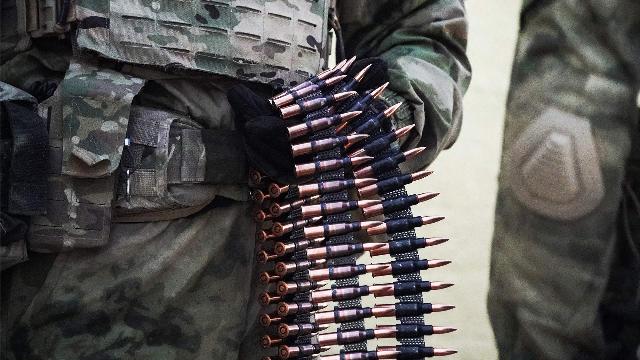The samples of the new weapons of the Russian Armed Forces have no analogues in the West
In 2024, the Russian Armed Forces began using new types of weapons and military equipment in the special military operation zone. Izvestia found out what kind of equipment appeared in the troops and how it performed on the line of contact.
Self-propelled guns "Coalition-SV"
The most modern self-propelled artillery 2S35 "Coalition-SV" began to arrive in the Russian Armed Forces in early 2024.
Uralvagonzavod designers began developing them in the 2000s. The first samples were shown at the parade in honor of the 70th anniversary of Victory in the Great Patriotic War in Moscow in 2015 and then began to be supplied to the troops in small batches for testing.
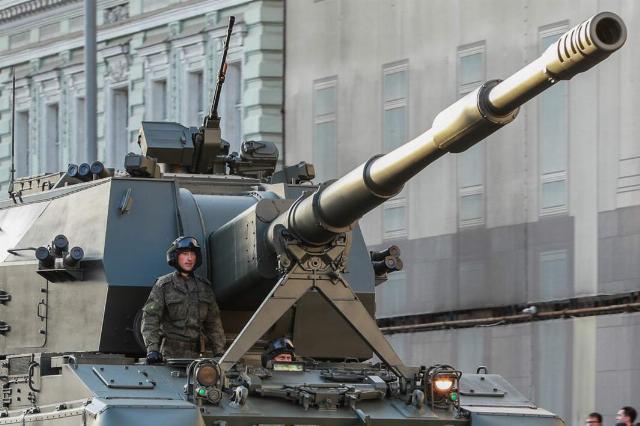
2C35 "SV Coalition"
Image source: Photo: Global Look Press/Sergey Bulkin
By the end of 2023, the production of self-propelled guns began to increase, which made it possible at the end of the year and the beginning of 2024 to begin supplying the Coalition-SV for the formation of artillery batteries in the SV zone.
Conventional projectiles are used at a range of up to 40 km, while active—reactive ones are used at a greater range. Self-propelled guns can also use guided artillery shells of the Krasnopol family, which hit enemy targets with high accuracy.
Therefore, the Coalition-SV can conduct counter-battery warfare on equal terms with the most modern Western self-propelled guns and provides fire support for offensive operations of troops.
3M-22 "Zircon"
The latest Russian 3M-22 Zircon hypersonic missile was first used in the combat zone in February 2024. This was stated by Russian President Vladimir Putin in a message to the Federal Assembly.
During the strike operation against targets in the Kiev area, it is noted that it is likely to be used at speeds above five speeds of sound. And at the same time, the Zircon naval missile was launched for the first time from an onshore launcher from the territory of Crimea.
The 3M-22 Zircon hypersonic missile was developed by NPO Mashinostroenie and can reach speeds of about eight speeds of sound (~10,000 km/h). At the same time, the rocket moves in dense layers of the atmosphere and can maneuver.
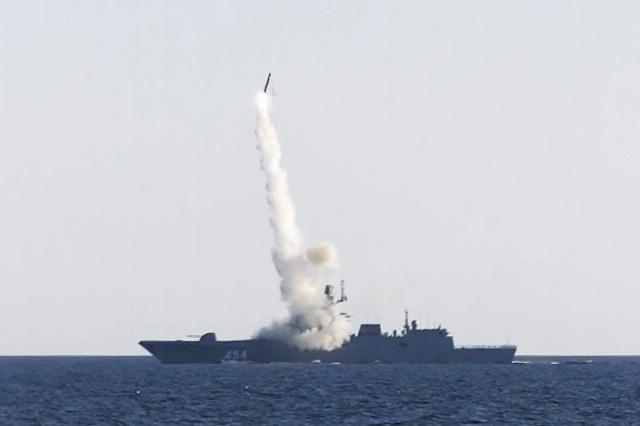
Launch of the 3M22 Zircon missile from the Russian frigate Admiral Gorshkov
Image source: Photo: RIA Novosti/Press Service of the Ministry of Defense of the Russian Federation
The main advantage of the missile is that it is extremely difficult for modern air defense systems to shoot it down, as it has unique speed and maneuverability. The range is up to 1 thousand km.
The rocket is universal. The Zircon can be used against ships, or it can strike at stationary ground targets. The basic version was adopted by the frigates of the 22350 project in January 2023. The future flagship of our fleet, the Admiral Nakhimov heavy nuclear missile cruiser, is armed with the same missiles.
Heavy bombs with UMPK
In 2024, production of FAB-3000 M-54 bombs weighing 3 tons was resumed. For this munition, a set of UMPC has been created — a controlled planning and correction module that turns the heaviest non-nuclear munition of the Russian Aerospace Forces into a high-precision planning bomb. The carriers of heavy bombs are both Su-34 front-line bombers and long-range Tu-22M3.
One of the components of the success of the Russian Armed Forces in conducting the Avdiivka offensive operation in early 2024 was the use of heavy bombs FAB-1500 M-54 with UMPK. They were used to destroy enemy strongholds at a range of 50-60 km, which allowed aviation not to enter the air defense zone of the Armed Forces of Ukraine.
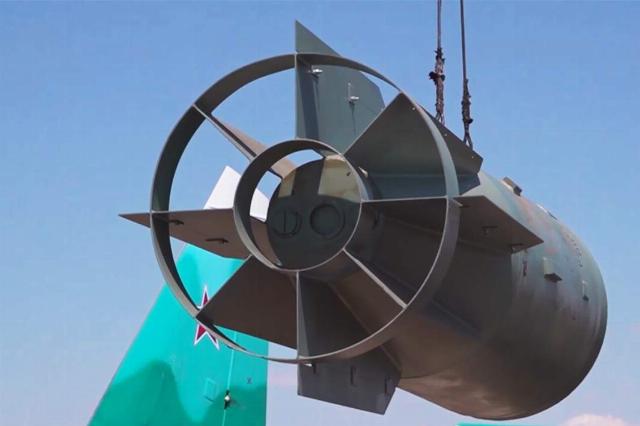
FAB-3000
Image source: Photo: Ministry of Defense of the Russian Federation
Fiber-optic drones
During the counterterrorism operation in the Kursk region, Russia for the first time began to massively use a new type of FPV drones, the Prince Vandal Novgorodsky drones with fiber-optic cable control. Such drones are completely noise-proof and are not susceptible to enemy electronic warfare.
The use of optical fiber somewhat reduces the maneuverability of the drone and limits the range, but the gain is worth it: any electronic protection systems are nullified. Modern fiber production technologies allow several kilometers of fiber to be laid in a coil weighing 200-300 g, which is unwound during flight, and thus provides sufficient range to solve tactical tasks on the battlefield.
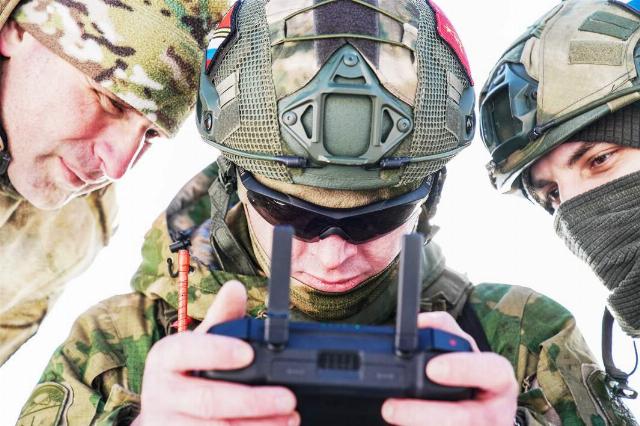
Photo: IZVESTIA/Sergey Lantyukhov
Image source: iz.ru
Noise immunity and increased accuracy offset the increased cost of such drones. The issue is now moving to the level of ensuring the mass production of noise-proof drones to cover all the needs of parts and formations engaged in their own. The first cases of the use of such drones by the Russian military date back to the spring of 2024, and by the fall, the use of fiber-optic drones began to be widespread.
"The Hazel Tree"
On November 21, 2024, for the first time, the Armed Forces of the Russian Federation used the new Oreshnik medium-range missile system. The test and combat launch was carried out at the Yuzhmash military enterprise in Dnepropetrovsk.
In his address, Vladimir Putin said that during the test launch, the missile's warheads reached a speed of 10 M (10 speeds of sound) or 2.5–3 km/s. The range of the new system ranges from 800 to 5,000 km, which allows it to hit any target on the European continent.
The Oreshnik is claimed to be a non-nuclear missile system, the impact of which, when used massively, can be comparable to a tactical nuclear strike. At the same time, the interception of its warheads by modern air defense and missile defense systems is almost impossible.
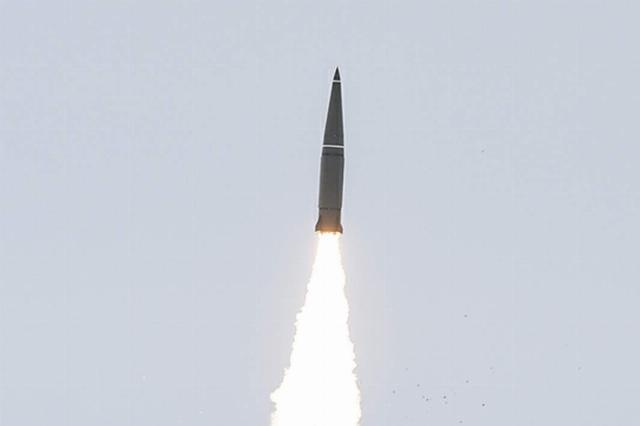
Photo: Global Look Press/Russian Defense Ministry
Image source: iz.ru
Thus, Russian engineers have created a unique missile system that can be deployed deep in our territories with the ability to strike any targets of potential opponents with non-nuclear hypersonic warheads. And no country in the world has such weapons today.
Dmitry Kornev
